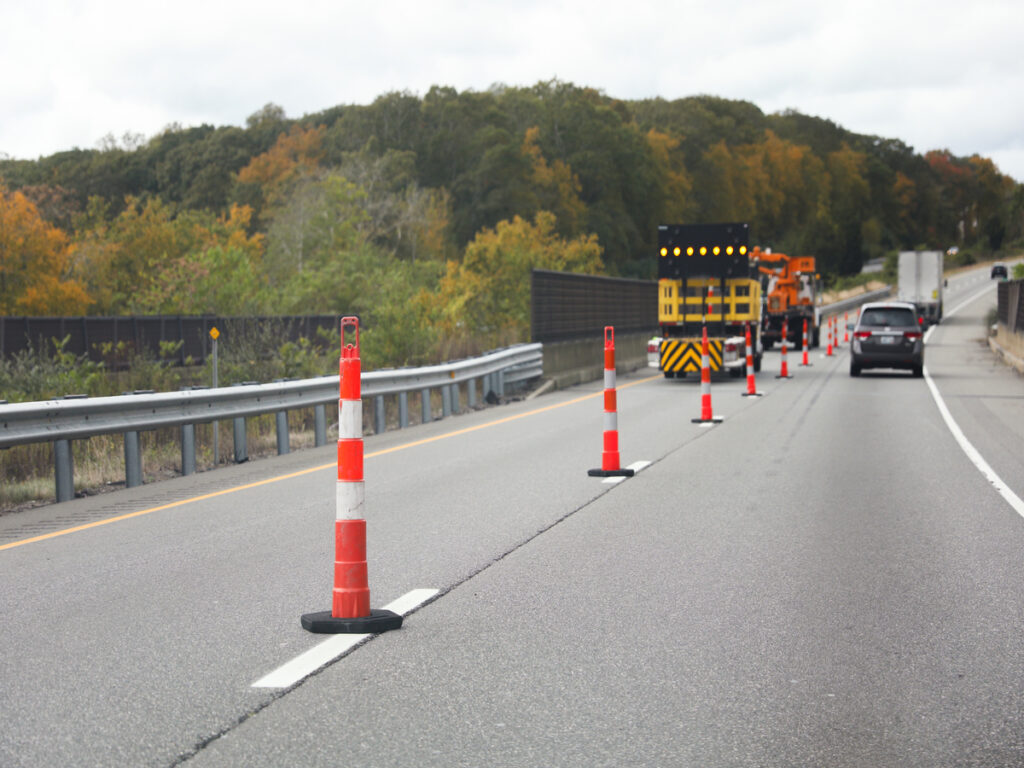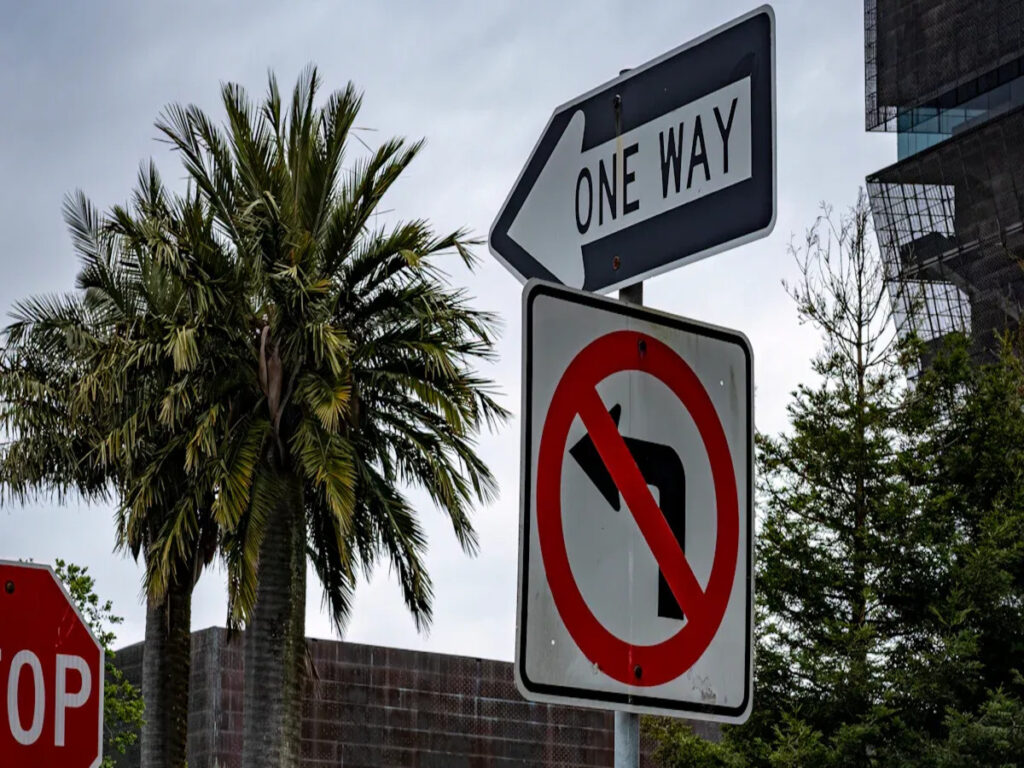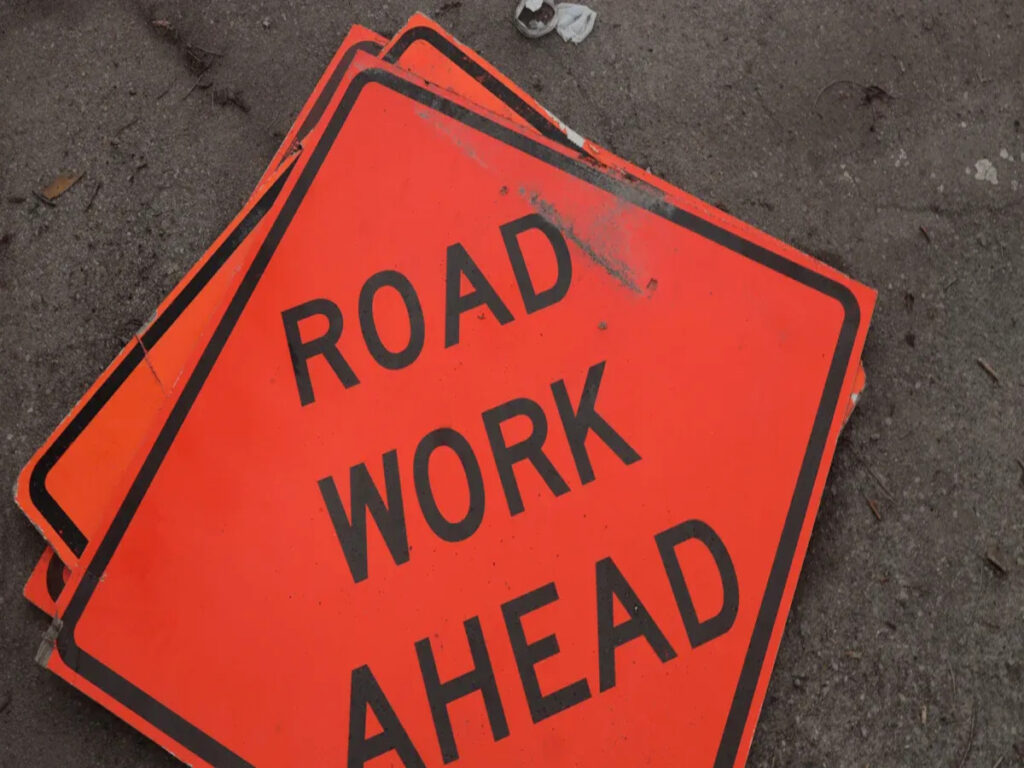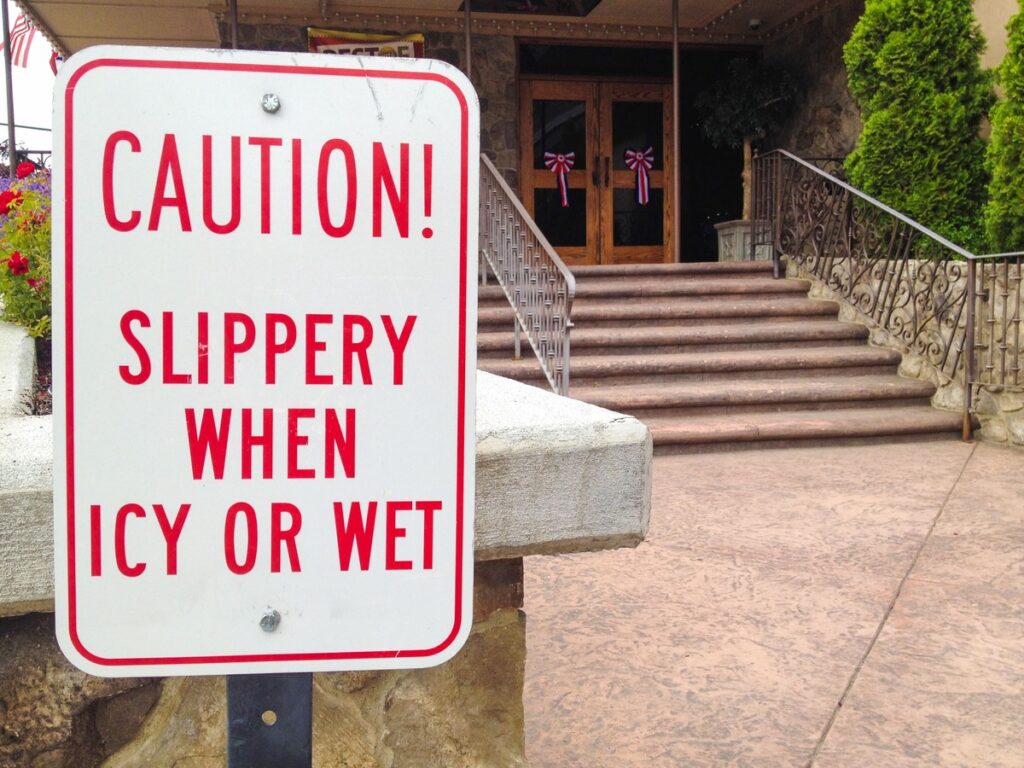
You play a critical role in keeping roads, parking lots, and job sites safe. Proper bollard installation and regular maintenance of traffic control posts help prevent crashes and protect both workers and motorists. The Federal Highway Administration highlights how the correct setup of devices like bollards ensures clear guidance and reduces risks. Over many years, cities have seen thousands of injuries prevented when you keep infrastructure, including bollards, in top condition. Reliable safety starts with the right steps for both installation and care.
OPTRAFFIC offers comprehensive support for bollard installation and maintenance, providing durable traffic control posts, expert guidance, and ongoing service to ensure your safety infrastructure remains effective. Whether you need initial setup advice or regular inspections, OPTRAFFIC helps you keep roads, parking lots, and job sites protected.
Key Takeaways
- Choose the right type of traffic control post—bollards block vehicles while delineators guide traffic safely.
- Follow proper installation methods like in-ground, surface-mounted, or removable bollards to ensure strong protection and easy maintenance.
- Maintain posts regularly by cleaning, inspecting for damage, and repairing or replacing parts to keep safety high and extend their lifespan.
- Always check spacing and placement to meet safety standards and allow safe movement for pedestrians, including those with disabilities.
- Follow safety rules and certifications like ADA, MUTCD, OSHA, and crash-rated standards to protect people and meet legal requirements.
Types of Traffic Control Posts

Bollards Overview
You see traffic bollards every day in cities, parking lots, and near buildings. These posts stand strong to guide vehicles, protect people, and mark boundaries. Bollards come in many forms, such as steel, concrete, and plastic. Steel bollards offer high impact resistance and last for years, making them a top choice for high-security bollards in busy or sensitive areas. Concrete bollards provide stability and need little maintenance, so you often find them in permanent spots. Plastic bollards work well for temporary needs or low-risk zones because they are flexible and easy to install. Today, you can find bollards with smart features like embedded lighting or retractable designs. Security bollards and high-security bollards help prevent vehicle attacks and keep important sites safe. The global market for bollards keeps growing, showing their value in modern traffic management.
- Fixed bollards control vehicle flow and protect pedestrian zones.
- Steel bollards are strong and ideal for high-security bollards.
- Concrete bollards offer weight and stability for permanent use.
- Plastic bollards are cost-effective and flexible for short-term needs.
- Security bollards with smart technology improve safety and monitoring.
Delineators Overview
Delineators guide drivers and mark lanes, especially where you need clear visual cues. You often see flexible plastic delineators in construction zones, parking lots, and along highways. These posts bend when hit, reducing damage and keeping maintenance low. Research shows that flexible delineators can cut accidents by 30% and improve traffic flow. Solar-powered delineators light up dark areas, making roads safer at night. Reflective delineators help drivers see better in bad weather or at night, reducing crashes by up to 35%. Materials like polyethylene and polyurethane make delineators tough and long-lasting. You can rely on delineators to keep traffic moving safely and to protect workers in busy areas.
- Flexible delineators reduce accidents and improve driver confidence.
- Solar-powered and reflective delineators boost visibility.
- Durable materials help delineators last through harsh weather.
Key Differences
Bollards and delineators both serve as protective barriers, but they work in different ways. Bollards stop vehicles and act as strong protective barriers, especially in high-security bollards applications. Delineators guide traffic and provide visual warnings, but they do not stop vehicles. You use bollards when you need to block or control cars, such as in front of storefronts or at facility entrances. High-security bollards protect against vehicle attacks and keep sensitive sites safe. Delineators shine in places where you need to direct traffic or mark lanes, like in construction zones or along winding roads. Both types play a key role in road safety, as shown in the table below:
| Category | Examples and Functions |
|---|---|
| Protective Infrastructure | Bollards, guard rails, crash cushions, roadside safety treatments |
| Traffic Control and Junctions | Delineators, road markings, signs, signalized junctions, roundabouts |
Tip: Use high-security bollards for maximum protection in high-risk areas, and flexible delineators for clear guidance in changing traffic conditions.
Bollard Installation Methods
You need to follow the right steps for bollard installation to ensure safety and durability. Each method has its own process and best practices. You should always perform safety checks before and after installation to confirm that the bollards will protect people and property.
In-Ground Installation
In-ground bollard installation gives you the strongest and most secure result. You often use this method for high-impact areas, such as storefronts, parking lots, and government buildings. Fixed bollards installed in-ground can stop vehicles and provide long-lasting protection.
Step-by-Step Process for In-Ground Bollard Installation:
- Mark the installation points clearly. Use chalk or spray paint to show where each bollard will go.
- Space the bollards 3 to 5 feet apart. In pedestrian zones, keep at least 3 feet between posts to meet ADA guidelines. In vehicle protection zones, use up to 5 feet for effective blocking.
- Drill holes at least twice the diameter of the bollard. This gives a strong foundation.
- Place a rebar cage inside the hole. This step adds strength, especially in high-impact or security bollard installation.
- For removable bollards, add a gravel base and a PVC drainage pipe. Proper drainage prevents water damage and keeps the bollard foundation dry.
- Set the bollard or ground sleeve in the hole. Make sure it stands straight.
- Pour concrete evenly around the bollard or sleeve. Smooth the surface for a clean finish.
- Allow the concrete to cure for 24 to 48 hours. Curing time depends on the weather.
- Perform safety checks. Test each bollard for stability and alignment.
Note: You should adjust your installation method based on the surface type. For example, use chemical anchors or grout on uneven ground.
You must follow codes and standards for long-lasting bollard installations. These include FEMA 427, ICC International Fire Code, NFPA 1, OSHA 3256, and UFC 3-600-01. These standards help you meet safety and access requirements.
Surface-Mounted Installation
Surface-mounted bollard installation works well when you cannot dig deep holes. You often use this method on existing concrete surfaces, such as parking garages or sidewalks. This method is faster and less invasive than in-ground installation.
Best Practices for Surface-Mounted Bollard Installation:
- Mark the installation points with chalk or spray paint.
- Space the bollards no more than 5 feet apart. This spacing blocks vehicles and keeps people safe.
- Use a heavy-duty drill to make holes in the concrete for anchor bolts.
- Insert anchor bolts into the holes. For extra strength, use chemical anchors or epoxy.
- Place the bollard over the bolts and secure it tightly.
- Check the alignment and stability of each bollard before finishing.
- Perform safety checks to confirm that all bollards are secure.
Surface-mounted bollards do not need deep holes or concrete footings. You can install them quickly, but you must make sure the surface is clean and level. This method is best for areas where you need flexibility or where underground utilities prevent deep digging.
Removable Bollards
Removable bollards give you flexibility. You can take them out when you need to allow vehicle access, then put them back for safety. You often use removable bollards in event spaces, emergency access routes, or loading zones.
How to Install Removable Bollards:
- Mark the installation points as you would for fixed bollards.
- Drill holes at least twice the diameter of the bollard. Make sure the holes are deep enough for the ground sleeve.
- Add a gravel base and a PVC drainage pipe for proper drainage. This step keeps water from collecting in the sleeve.
- Insert the ground sleeve and set it straight.
- Pour concrete around the sleeve and smooth the surface.
- Let the concrete cure for 24 to 48 hours.
- Insert the removable bollard into the sleeve. Lock it in place.
- Perform safety checks to ensure the bollard is stable and easy to remove when needed.
Removable bollards work well in places where you need both security and access. You can use them for temporary traffic control or to protect areas during special events.
Tip: Always keep the ground sleeve clean and check for debris before inserting the bollard. This helps you avoid problems with removal and keeps the installation safe.
Comparison Table: Fixed vs. Removable Bollards
| Feature | Fixed In-Ground Bollards | Surface-Mounted Bollards | Removable Bollards |
|---|---|---|---|
| Security Level | High | Moderate | Moderate to High |
| Installation Time | Longer | Shorter | Moderate |
| Flexibility | Low | Moderate | High |
| Typical Use Cases | Storefronts, high-security | Parking lots, sidewalks | Event spaces, access routes |
You should always choose the bollard installation method that matches your site needs and safety goals. Each method has its own strengths, but all require careful planning and safety checks for the best results.
Installing the Bollards: Best Practices

Planning and Assessment
You start every successful bollard installation with careful planning and a thorough site assessment. Research shows that you improve results when you evaluate traffic and pedestrian flow before you begin. You need to choose the right bollards for your location and map out where each post will go. Always check the ground conditions. Stable soil and good drainage help keep your bollards secure for years. You should also look for underground utilities by reviewing local maps. This step prevents costly mistakes and keeps your project safe. When you follow these bollard installation best practices, you avoid delays and extra costs. You also make sure your installation meets all safety rules and lasts longer.
Tip: Use a checklist to review hazards, confirm compliance, and select durable materials before installing the bollards.
Placement and Spacing
Proper placement and spacing are key parts of bollard installation best practices. You want to block vehicles but still let people move safely. For most sites, keep at least three feet between bollards. This spacing meets ADA standards and allows wheelchairs to pass. In bus terminals, place bollards at entrances and walkways to guide traffic and protect waiting areas. For critical sites, install bollards around the entire perimeter to stop vehicles from every direction. You should also plan for maintenance access by using removable or retractable bollards in some spots. Good drainage under removable bollards prevents rust and keeps them working well. Always control the concrete mix to avoid blocking drainage pipes.
Final Checks
Before you finish, always perform final checks as part of your bollard installation best practices. Test each bollard for stability and alignment. Make sure the posts do not create tripping hazards or block clear paths. Confirm that all drainage systems work and that the installation meets ADA and OSHA guidelines. When you follow these steps, you ensure your bollards stay effective and safe for years.
Delineator Installation
Flexible Base Installation
You can install flexible delineators quickly and safely using a modular base system. This method works well for roads, parking lots, and construction zones. The flexible base lets the post bend if a car hits it, which helps prevent damage and keeps people safe.
To complete the installation, follow these steps:
- Fix the surface-mounted base to the ground with earth screws. Make sure the base sits flat and does not move.
- Attach the connection part to the middle of the base using bolts. This part holds the post steady.
- Insert the delineator post into the connection part. Push it down until it fits snugly.
- Secure the delineator post with bolts. Tighten each bolt so the post stays upright.
This modular installation method lets you replace damaged posts without removing the whole base. You save time and money because you only swap out the broken parts. You also keep your site safe and looking neat.
Tip: Check the bolts and base after heavy use or bad weather. Tighten any loose parts to keep the installation strong.
Temporary Post Setup
You may need to set up delineators for short-term events or work zones. Temporary installation methods help you move posts as needed. You can use weighted bases or adhesive pads to hold the posts in place. These options work well when you cannot drill into the ground.
Place the base where you want the post. Make sure the area is clean and dry. Insert the delineator post into the base. For extra safety, use reflective tape or lights on each post. This step helps drivers see the posts at night or in low light.
Temporary installation gives you flexibility. You can move or remove the posts when the job is done. Always check that each post stands straight and does not tip over.
Note: Store extra posts and bases in a dry place. This care keeps your equipment ready for the next installation.
Safety Bollard Maintenance
Keeping your bollards in top shape protects people and property. You need a clear plan for safety bollard maintenance. This plan helps you spot problems early and keeps your posts working for years. Good upkeep also saves money by avoiding big repairs. You should check your bollards often and follow a regular schedule for cleaning, inspection, and repairs.
Steel and Metal Bollards
Steel and metal bollards stand strong in busy areas. They face harsh weather, car impacts, and daily wear. You must give them regular attention to keep them safe and looking good.
Key Steps for Steel and Metal Bollard Maintenance:
- Cleaning:
Wipe down your bollards every month. Use mild soap and water to remove dirt, salt, and grime. Clean posts look better and last longer. - Corrosion Protection:
Check for rust or chipped paint. If you see rust, sand it off and repaint the spot. Use powder coating or galvanizing for extra protection. Stainless steel bollards resist rust best, but you still need to clean them. - Recoating:
Repaint or recoat your bollards every two to three years. This step keeps them bright and shields them from rain and sun. - Impact Inspection:
After a car hits a bollard, inspect it right away. Look for dents, bends, or cracks. If you find damage, fix or replace the post to keep the area safe. - Foundation Checks:
Make sure the base of each bollard stays firm. Push on the post to test for movement. If the bollard wobbles, tighten bolts or repair the concrete footing.
Tip: Keep a maintenance log for each bollard. Write down cleaning dates, repairs, and inspections. This record helps you track upkeep and spot patterns.
Steel and Metal Bollard Maintenance Checklist
| Task | Frequency | What to Look For |
|---|---|---|
| Cleaning | Monthly | Dirt, salt, stains |
| Corrosion Check | Quarterly | Rust, chipped paint, pitting |
| Recoating | Every 2-3 years | Fading, peeling, dull finish |
| Impact Inspection | After collisions | Dents, bends, cracks |
| Foundation Check | Twice a year | Loose bolts, cracks, movement |
You keep your site safe when you follow these steps. Regular safety bollard maintenance prevents small issues from turning into big problems.
Plastic Bollards
Plastic bollards offer flexibility and easy installation. They work well in parking lots, construction zones, and places with changing needs. You must care for them to keep them bright and visible.
Steps for Plastic Bollard Maintenance:
- Cleaning:
Wash your plastic bollards every month. Use a soft cloth and gentle cleaner. This step removes dirt and keeps reflectors shining. - UV Protection:
Sunlight can fade plastic posts. Some bollards use UV-resistant materials or covers. These covers use sunlight to charge batteries for lights, even on cloudy days. You do not need special wiring. This feature helps your bollards stay bright and visible. - Reflectivity Maintenance:
Check the reflective strips often. If they look dull or scratched, replace them. Good reflectivity helps drivers see the posts at night or in bad weather. - Winter Care:
Cold weather can affect bollard batteries. When temperatures drop below freezing, remove the batteries and turn off the unit. This step can help the batteries last up to three years. Store the batteries in a warm, dry place until spring. - Impact and Flexibility Checks:
Inspect your bollards after heavy use or impacts. Look for cracks, bends, or fading. Replace damaged posts to keep your site safe.
Note: Store extra plastic bollards indoors during long winter breaks. This practice keeps them flexible and ready for use.
Plastic Bollard Maintenance Table
| Task | Frequency | What to Watch For |
|---|---|---|
| Cleaning | Monthly | Dirt, grime, faded colors |
| UV Protection Check | Quarterly | Fading, brittle plastic |
| Reflectivity Check | Monthly | Dull or missing strips |
| Winter Battery Care | Before freezing | Remove and store batteries |
| Impact Inspection | After impacts | Cracks, bends, loss of shape |
You keep your plastic bollards working well with regular upkeep. Long lasting bollard maintenance means checking posts often and acting fast when you see problems. This approach keeps your site safe and your posts looking new.
Delineator Maintenance
Cleaning and Reflectivity
You keep delineators bright and visible by following a regular cleaning routine. Dirt, dust, and road grime can build up quickly, especially in busy areas. Clean posts help drivers see lanes and hazards, even at night or during storms.
- Use a soft brush or cloth to remove loose dirt from the surface.
- For tough grime, mix a mild detergent with water and gently scrub the post.
- Avoid abrasive tools because they can scratch or damage the plastic.
- Clean reflective surfaces with a microfiber cloth and a non-abrasive cleaner. This keeps the reflectivity strong.
- Stay away from harsh chemicals. These can make the reflective tape fade or peel.
Tip: Clean delineators often to keep them bright. Regular cleaning helps maintain safety for everyone on the road.
Check the reflective tape or panels during each cleaning. If you see dull spots or scratches, replace the tape right away. Prismatic reflective tapes work best in high-speed areas because they shine brighter. When you keep reflectors in good shape, you help drivers spot the posts from far away.
Storage and Repairs
Proper storage keeps your delineators ready for use. When you store posts for the winter or between projects, choose a dry, cool place. Stack them carefully to avoid bending or warping. Keep bases and hardware together so you do not lose any parts.
If a delineator bends or cracks, inspect it closely. Small bends often snap back into shape, but deep cracks mean you should replace the post. Always check the base for damage after impacts. Tighten bolts and replace worn parts as needed.
| Common Issue | What You Should Do |
|---|---|
| Faded reflectors | Replace tape or panels |
| Bent post | Straighten or replace |
| Cracked plastic | Replace post |
| Loose base | Tighten bolts or repair |
Note: Quick repairs and good storage habits help extend the life of your delineators. This approach supports a strong maintenance program and keeps your site safe.
Lifespan Extension
Maintenance Schedules
You can keep your traffic control posts working longer by following a set maintenance schedule. Regular inspections help you spot problems before they grow. When you check your posts often, you prevent small cracks or loose bolts from turning into bigger issues. Many experts say that post-installation maintenance is the best way to protect your investment.
- Scheduled maintenance can cut equipment breakdowns by 70%.
- You may see a 25% drop in downtime costs when you stick to a routine.
- If you wait until something fails, you might pay up to ten times more than if you did regular upkeep.
- Inspections and quick repairs help your posts last longer and keep their value.
- Proactive care means fewer surprises and smoother operation.
Set a calendar for cleaning, inspection, and repairs. Write down each inspection date and what you find. This record helps you plan and keeps your posts in top shape for long-term performance.
Replacement Parts
Sometimes, you need to swap out parts to keep your posts working well. You might need new reflective tape, bolts, or even a new base. Using the right replacement parts keeps your posts safe and looking good. Always choose parts that match the original design. This step helps you avoid problems with fit or safety.
Keep extra parts on hand so you can fix issues fast. When you replace worn pieces right away, you help extend the life of your traffic control posts. Quick action after an inspection can stop bigger problems from starting.
Repair vs. Replace
You need to decide if you should repair a post or replace it. If you find a small crack or faded reflector during an inspection, a simple repair may work. If a post bends, breaks, or loses its shape, replacement is often safer. Regular inspections help you make smart choices.
Think about cost and safety. Repairs save money, but only if the post stays strong and safe. If you repair a post many times, it may be better to replace it for better long-term performance. Your goal is to keep your site safe and your posts working for their full life.
Failure and Repair
When you install traffic control posts, you want them to last and keep people safe. Over time, you may see problems like bending, cracking, rust, or loose foundations. Knowing how to spot and fix these issues helps you maintain safety and avoid costly repairs.
Bending and Deformation
You may notice that steel bollards sometimes bend after a strong impact. This bending, called ductile fracture, happens when metal stretches before breaking. Flexible metals like steel can bend under heavy loads, such as a car hitting the post. If you see a bent post, check for other signs of bollard damage. Replace or repair the post to keep your site safe.
| Failure Mode | Description | Example / Relevance to Traffic Control Posts |
|---|---|---|
| Bending (Ductile Fracture) | Metal bends or stretches plastically before breaking, common in flexible metals like steel. | Steel posts may bend under mechanical overload before fracturing. |
| Deformation (Creep Failure) | Gradual shape change under constant stress and elevated temperature over time. | Less common but possible in posts exposed to heat and constant load. |
Tip: Inspect bollards after any collision. Early action prevents further safety risks.
Cracking and Fading
Cracks can form in posts after repeated impacts or from weather changes. Fatigue and stress cause these cracks to grow over time. Plastic posts may also fade in sunlight, making them less visible. You should check for cracks and fading during regular inspections. Replace cracked posts and refresh faded reflectors to keep safety high.
Corrosion and Rust
Steel posts can rust when exposed to rain or snow. Rust weakens the structure and can lead to failure. You should look for orange or brown spots on your bollards. Clean and repaint rusty areas to stop corrosion. Use galvanized or stainless steel for better protection.
Loose Foundations
A loose foundation makes any post unsafe. You might notice a post that wobbles or leans. This problem often comes from soil movement, poor installation, or repeated impacts. Tighten bolts and repair concrete bases as soon as you find a loose post. Secure foundations help maintain safety for everyone.
Note: Regular checks and quick repairs keep your bollards strong and your site safe.
Compliance and Standards
ADA Compliance
You must follow ADA guidelines when you install traffic control posts. These rules help everyone, including people with disabilities, move safely through public spaces. You need to measure clearances and spacing for bollards and delineators to make sure wheelchairs and walkers can pass.
- Clear the area before you measure.
- Calibrate your tools, like laser devices, for accuracy.
- Measure knee clearances at several points to check for consistency.
- Record all findings in a central database.
- Audit your work and train your staff often.
- Keep detailed records, including inspection reports and user feedback.
The Washington State Department of Transportation uses special forms and instructions to check ADA compliance at every project stage. These steps help you create a strong audit trail and keep your safety measure practices up to date.
Safety tip: Always document your measurements and inspections. This habit helps you spot problems early and keeps your site safe for everyone.
MUTCD Guidelines
You need to follow the Manual on Uniform Traffic Control Devices (MUTCD) when you install or maintain traffic control posts. The MUTCD gives you clear rules for traffic signs, markings, and devices like safety bollards and road delineators.
- The latest MUTCD edition, federal notices, and official interpretations guide your work.
- Interim approvals let you use new or experimental devices.
- Policy statements and state-level rules help you meet local needs.
- Webinars and research keep you updated on best practices.
These documents make sure your safety plans match national standards. You help drivers and pedestrians stay safe by following these guidelines.
OSHA Safety
You must protect workers and the public during installation and maintenance. OSHA sets rules for safe work zones, equipment use, and personal protective gear. You need to train your team and use barriers, like security bollards, to keep everyone safe. Always check for hazards before you start work. Use crash-resistant bollards in high-risk areas to prevent accidents.
Safety tip: Review OSHA rules before every project. This step helps you avoid injuries and keeps your site safe.
Crash-Rated Certifications
Crash-rated bollards and crash-resistant bollards give you strong protection in places with high vehicle risk. You should look for certifications like ASTM, PAS, or IWA. These standards test how well high-security bollards and crash-resistant bollards stop vehicles. Crash-rated bollards are key for government buildings, airports, and busy storefronts. You need to check the rating before you install them. Use crash-resistant bollards and high-security bollards where safety is most important.
| Certification | What It Means | Where to Use |
|---|---|---|
| ASTM | Tested for impact resistance | Storefronts, city centers |
| PAS | High-security crash standards | Airports, embassies |
| IWA | International crash testing | Critical infrastructure |
You improve safety and security when you choose the right crash-resistant bollards for your site.
You protect people and property when you install and maintain traffic control posts correctly. Following standards and best practices helps you avoid costly mistakes and keeps your site safe. Professional consultation brings engineering experience that ensures each post meets safety goals. Engineering oversight and adherence to standards help you achieve high safety levels and manage costs. For complex projects, seek expert advice and explore related guides for more support.
FAQ
How often should you inspect traffic control posts?
You should inspect your posts at least once every three months. Check for damage, loose parts, and fading reflectors. After any impact or severe weather, inspect the posts right away to keep your site safe.
What is the best way to clean plastic delineators?
Use a soft cloth and mild soap with water. Avoid harsh chemicals or rough brushes. Clean reflectors gently to keep them bright. Regular cleaning helps drivers see the posts better, especially at night or in bad weather.
Can you install bollards on asphalt surfaces?
Yes, you can install bollards on asphalt. Use surface-mounted bollards with strong anchor bolts. Make sure the surface is level and clean before installation. For extra strength, consider using a concrete footing under the asphalt.
How do you know when to replace a traffic post instead of repairing it?
Replace the post if you see deep cracks, severe bends, or missing parts. If repairs do not restore strength or visibility, choose a new post. Safety always comes first.


















